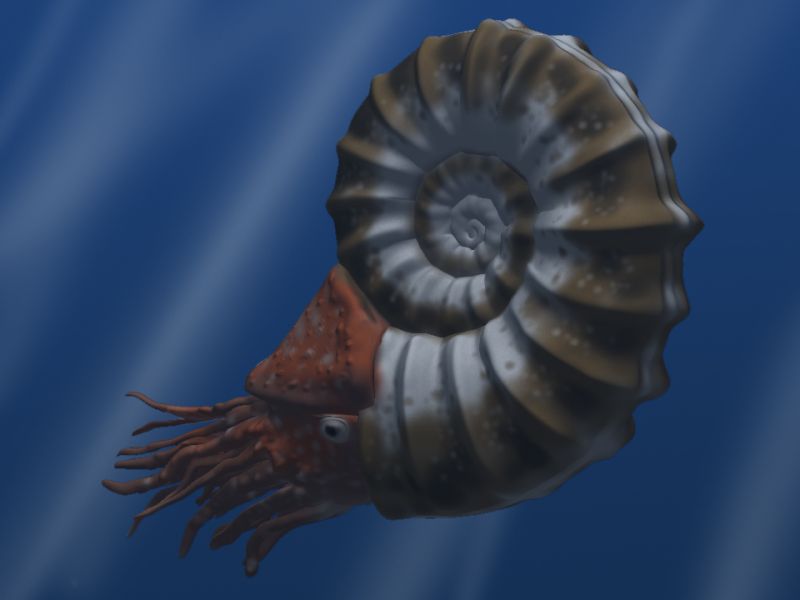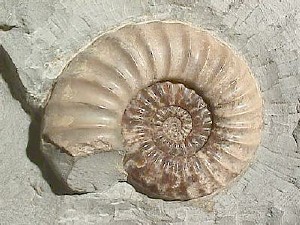Ammonites
Ammonites are an extinct group of marine invertebrate animals in the subclass Ammonoidea of the class Cephalopoda. These molluscs are more closely related to living coleoids (i.e. octopuses, squid, and cuttlefish)than they are to shelled nautiloids such as the living Nautilus species.

The earliest ammonites appear during the Devonian, and the last species died out during the Cretaceous–Paleogene extinction event. The earliest ammonites lived 415 million years ago. They moved by jet propulsion and had shells comprised of multiple linked chambers. Their tentacles extended outward from the head chamber to catch and devour their prey. As the ammonite grew, new chambers would grow behind the head. Fossilized ammonites often display what are called "sutures," intricate patterned details on the outer surface of the shell that mark where the chambers met the outer wall of the shell. Not all ammonites are round. Some are straight, but still display distinct chambers along the shell.
Ammonites are excellent index fossils, and it is often possible to link the rock layer in which a particular species or genus is found to specific geological time periods. Their fossil shells usually take the form of planispirals, although there were some helically spiraled and nonspiraled forms (known as heteromorphs).
The name "ammonite", from which the scientific term is derived, was inspired by the spiral shape of their fossilized shells, which somewhat resemble tightly coiled rams' horns.
Fossils on the Building
In 1994 Harvard furthered its use of imported rocks with the construction of Hauser Hall. The Law School building's yellow-gray limestone was quarried in Germany. Chosen for its color, the 175-millionyear-old limestone contains numerous striking fossil ammonites, an extinct marine relative of the octopus and chambered nautilus including one speciment that very noticeable on the east side of the building. This modern building tells the story of ancient seas, but also of the changing tastes and fortunes of Harvard. The plain facade and local rock of Harvard Hall has given way to the elaborate patterns and exotic rock of Hauser. Like all good stories, the buildings of the main campus can be read for both text and subtext. Natural history and cultural history are linked, reminding us that living in an urban environment does not need to separate us from the natural world.
If we could identify the Ammonites on Hauser Hall, we could age the German Limestone without leaving the campus.

Logging Requirements
1. What color is the Limestone?
2. Find a fossil Ammonite (good for the kids) and state its approximate diameter.
3. Remember that the polished rock sometimes cuts a section through an Ammonite. Try to find an example and describe the shape of the cross section of the chamber.
4. Do you see any other types of fossils in the limestone?
5. Post a picture of yourself (face not required) or a personal item with a fossil.